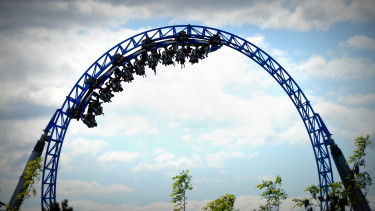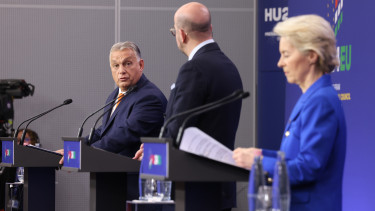Third shot of Pfizer's COVID-19 vaccine likely to be needed to protect from new mutations

The SARS-CoV-2 B.1.617.2 Variant of Concern (VOC), first detected in India, is now dominant in the UK, having rapidly displaced the B.1.1.7 strain that emerged in the UK with the second COVID-19 wave in late 2020. The Delta variant has now been reported in more than 80 countries.
The efficacy of currently licensed COVID-19 vaccines against B.1.617.2 is unknown; although it possesses 12 mutations in its spike protein relative to the wildtype SARS-CoV-2 first detected in Wuhan, China, in December, 2019, B.1.617.2 lacks mutations at amino acid positions 501 or 484 in its ACE2 receptor-binding domain, commonly associated with VOCs or escape from neutralising antibodies (NAbs).
To determine vaccine-induced NAb escape by B.1.617.2 and compare activity to previous strains with existing estimates for population-based vaccine efficacy, researchers carried out an initial analysis of the Legacy study, established in January, 2021, by University College London Hospital and the Francis Crick Institute in London, UK, to track serological responses to vaccination in prospectively recruited staff volunteers.
The Lancet reported earlier this month that using a high-throughput live-virus SARS-CoV-2 neutralisation assay, they determined NAb titres (NAbTs) in 250 participants (median age 42 years [IQR 33–52]) after either one dose or two doses of Pfizer–BioNTech's Comirnaty (BNT162b2) against five SARS-CoV-2 strains:
- a strain with the original spike sequence (Wild-type);
- a strain with an Asp614Gly mutation isolated during the first wave of infection in the UK, in 2020 (D614G);
- and VOCs B.1.617.2,
- B.1.351 (first detected in South Africa in late 2020), and
- B.1.1.7.
Notably, across all variants, increased age significantly correlated with reduced NAbT, whereas no correlation was observed for sex or body-mass index.
NAbTs reduced over time after administration of the second dose of BNT162b2: participants (n=14) who attended an additional study visit 8–16 weeks after their second BNT162b2 dose showed significantly reduced NAbTs against all variants. While the final NAbTs against Wild-type, D614G, and B.1.1.7 remained within the quantitative range of the assay (IC50>40), two participants' NAbTs against VOCs B.1.617.2 and B.1.351 dropped below 40 on their later study visit about 3 months after their second BNT162b2 dose.
These data, together with epidemiological data of B.1.617.2 growth, raise the possibility that this VOC presents a dual challenge of reduced vaccine efficacy akin to the B.1.351 VOC, and increased transmissibility beyond the B.1.1.7 VOC.
"The impact of such a change is challenging to predict: it remains difficult to assess precisely to what extent the reduction in NAbTs we observe will impact vaccine efficacy and increase disease severity in a vaccinated population, especially given the multiple factors that contribute to this process, such as long-lived humoral immunity."
However, data suggest that most participants that received two doses of Comirnaty (BNT162b2) would be protected against B.1.617.2 infection and associated disease—consistent with preliminary data inferring vaccine efficacy against B.1.617.2 in the UK based on rates of S-gene target failure during quantitative RT-PCR testing. The researchers expect that improved vaccine efficacy estimates will allow more precise modelling of correlates of protection in the coming months.
The researchers highlighted that two doses of Comirnaty still give the best chance of building a sufficient level of immunity against SARS-CoV-2 variants.
"Indeed, regardless of the absolute vaccine efficacy requirements, peak NAbTs are significantly reduced against VOCs B.1.617.2 and B.1.351 compared with NAbTs against earlier variants, and consequently, vaccine efficacy on an individual or sub-population level will become more sensitive to reductions in NAbTs occurring as a result of factors aside from virus strain, providing a basis to understand observed vaccine efficacy failure in other combinations of vaccine and target population."
In the case of single-dose recipients, their data show that NAbTs are significantly lower against B.1.617.2 and B.1.351 VOCs relative to B.1.1.7, implying that
although a single dose might still afford considerably more protection than no vaccination, single-dose recipients are likely to be less protected against these SARS-CoV-2 variants.
"These data therefore suggest that the benefits of delaying the second dose, in terms of wider population coverage and increased individual NAbTs after the second dose, must now be weighed against decreased efficacy in the short-term, in the context of the spread of B.1.617.2."
The researchers stressed that worldwide, their data highlight the ongoing need to increase vaccine supply to allow all countries to extend second-dose protection as quickly as possible.
In the longer term, they note that both increased age and time since the second dose of BNT162b2 significantly correlate with decreased NAb activity against B.1.617.2 and B.1.351.
Consequently, further booster immunisations of groups that should be prioritised for vaccination, as well as others with lower vaccine-induced NAbTs than the cohort of BNT162b2 recipients studied here (ideally with modified vaccines that induce NAbs that broadly neutralise emerging VOCs) are more likely to be required to maintain the highest levels of NAbs in regions where B.1.617.2 or other equally NAb-resistant strains become prevalent.
The immunity gained from Russia's COVID-19 vaccine Sputnik V will last for about two years or more, said Alexander Gintsburg, the director of Russia's Gamaleya Institute, the developer of the vaccine.
China's Sinopharm is currently looking into the maximum immunity period, but no results have been published yet.
Pfizer CEO Albert Bourla said in April people will “likely” need a booster dose of a COVID-19 vaccine within 12 months of getting fully vaccinated. He said it’s possible people will need to get vaccinated against the coronavirus annually.
“A likely scenario is that there will be likely a need for a third dose, somewhere between six and 12 months and then from there, there will be an annual revaccination, but all of that needs to be confirmed. And again, the variants will play a key role,” he told CNBC during an event with CVS Health.
Hungary's National Public Health Centre (NNK) told commercial broadcaster RTL Klub that there's currently no possibiliyt of requesting or administering a third jab, as it would be a violation of regulations.
Cover photo: Getty Images








